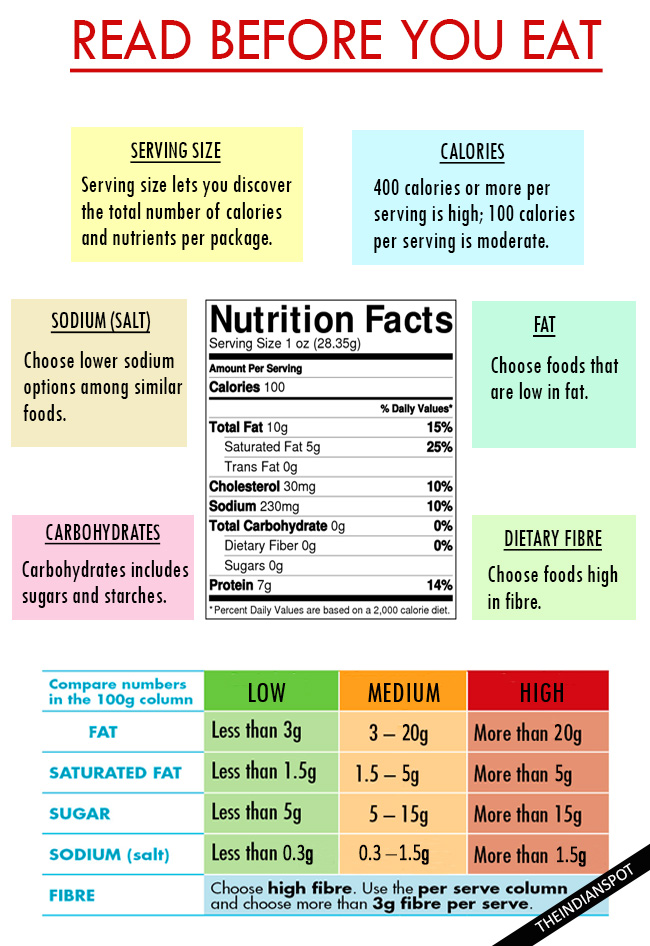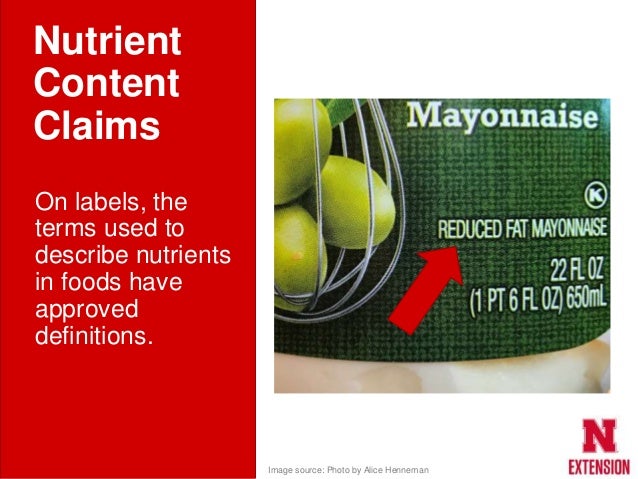38 how to understand food labels uk
Labelling | Food Standards Agency Guidance on the health and identification marks that must be applied to products of animal origin (POAO), such as meat, egg products, fish, cheese and milk. Importing fruit and vegetables Guidance... How to read food labels | safefood education Topic 3 - Healthy eating information and reducing food waste. Activity Sheets: The food groups and reference daily intakes (PDF, 300KB) Classroom Slides (PDF, 2MB) Information Sheet (PDF, 1.5KB) Teacher's Notes (PDF, 2MB) Transition year Topic 1 - Food labelling and healthy eating. Activity Sheets: Identify the foods from the ingredients (PDF ...
The Importance of Food Labels | Requirements for Packaging Your pre-packaged food must include the following on its labels: The name of the food. This must be a true representation of your product and must not be false or misleading. A list of ingredients. You must use ' Ingredients ' as the heading and list the ingredients used to make the product in descending order of weight.

How to understand food labels uk
Looking at labels - British Nutrition Foundation Using the government scheme, a combination of colour coding (traffic lights) and nutritional information is used to show, at a glance, whether a product is high (red) , medium (amber) or low (green) in fat, saturated fat, salt and sugars, and how much energy (calories and kilojoules) it provides. PDF Understanding of Food Labelling Terms Understanding of Food Labelling Terms Used to Indicate the Absence or Reduction of Lactose, Milk or Dairy 7 their understanding was also hindered by a lack of clarity about the meaning of the... Understanding food labels - Blood Pressure UK The label will tell you how much energy (in kilocalories and kilojoules), fat, saturated fat (often written as saturates), carbohydrate, sugars, protein and salt is in the food. The amounts will be given per 100g or 100ml of the product, and sometimes by portion as well, so you can work out how much you're eating.
How to understand food labels uk. How to Understand and Use the Nutrition Facts Label | FDA It's important to realize that all the nutrient amounts shown on the label, including the number of calories, refer to the size of the serving. Pay attention to the serving size, especially how ... Differences between EU and US nutrition labels go far beyond ounces and ... The US. In the US, the Food and Drug Administration (FDA) is responsible for labeling. The agency's rules for what must be included on a packaged product's label; what can, under certain ... Food labels - Coeliac UK Manufacturers are given guidance by the Food Standards Agency on when to label a product with a 'may contain' statement. They may use labelling such as: may contain traces of gluten. made on a line handling wheat. made in factory also handling wheat. not suitable for people with coeliac disease/a wheat allergy due to manufacturing methods. Food labelling - what you need to know | Health | Bupa UK The traffic light food labelling system helps you see whether a food or drink is healthy just by glancing at the colours on the label. The colours are: green = low amount in the food amber = medium amount in the food red = high amount in the food
How to read a food label | Dietitian UK A food label should be able to tell you: what the food is a 'best before' or 'use by' date how it should be stored provide cooking directions, if necessary a list of the ingredients in order of most to least in quantity any allergens such as milk, eggs, nuts, wheat written in bold. Understanding food labels - World Cancer Research Fund Nutrients: fat, saturates, sugars and salt Nutrition labels show the amount of each nutrient in a portion, in grams. The amounts will also be colour-coded with traffic light labels (as mentioned above), so that you can easily see if that amount is high (red), medium (amber) or low (green). What's a 'serving'? Food labelling and packaging: Overview - GOV.UK To sell food and drink products, the label must be: clear and easy to read permanent easy to understand easily visible not misleading You must show certain basic information and list the... Understanding food labels | Diabetes UK The labels show how many calories are in the food or drink and are also colour coded to show whether the food is low (green), medium (amber) or high (red) in fat, saturated fat, sugar and salt. The information on the front of the pack also tells you how the portion of the food contributes to the Reference Intake (RI) of an adult.
Nutrition labels - Food A Fact Of Life Task the pupils to complete the Front of pack nutrition labels worksheet and Front of pack nutrition labels to understand how to use food labels to make healthier choices.; Using a nutritional analysis programme, such as Explore food, can help pupils understand how to use food labels to make healthier choices. Use the following activities: Comparing the label worksheet - uses nutritional ... 10 tips for understanding food labels - Heart Matters magazine Here are 10 easy tips to help you read back-of-packet labelling: 1. Read the ingredients list Most pre-packaged foods have an ingredients list on the back of the packet. Everything that goes into your food will be listed in weight order from biggest to the smallest. Food labels - NHS Most pre-packed foods have a nutrition label on the back or side of the packaging. These labels include information on energy in kilojoules (kJ) and kilocalories (kcal), usually referred to as calories. They also include information on fat, saturates (saturated fat), carbohydrate, sugars, protein and salt. How to Read Food Labels Without Being Tricked - Healthline Still, processed foods that are labeled low-carb are usually still processed junk foods, similar to processed low-fat foods. Made with whole grains. The product may contain very little whole ...
Food labelling: giving food information to consumers - GOV.UK Show the 'best before' or 'use by' date. You must usually show either a 'best before' or a 'use by' date on the packaging or label of pre-packed food products. Only show a 'use ...
Food labels too complicated for most shoppers to understand - new research And food labels play a role in this - but manufacturers need to present this information in clear and easy to understand formats to be useful - as most people don't have hours to mull over the...
How To Read Food and Beverage Labels | National Institute on Aging There are three types of product dates commonly printed on packaged foods and beverages: "Sell by" tells how long the manufacturer suggests that a store should sell items such as meat, poultry, eggs, or milk products. Make sure you buy by this date. "Use by" tells how long items will be at peak quality.
Reading labels | Diabetes UK Key points Always look at the 'total carbohydrate' on the label when carb counting. This will make sure you are counting both the complex (starchy) and simple (sugary) carbs in your food. Both will raise your blood glucose (blood sugar) levels, and need to be matched with insulin.
How to decode a food label - BBC Future Some nations, like the UK, have a traffic light system for nutrition that expresses how healthy a processed food is in terms of fat, saturates, sugars and salt, using the colours red, amber and...
Understanding food labels | nidirect Understanding food labels Most pre-packed foods have a nutrition label on the back or side of the packaging. They can help you choose between products, and keep a check on the amount of foods high...

Food Label Explanation: www.scripps.com. This infographic can help you better understand food ...
How to understand food labels - Eat For Health The Nutrition Information Panel on a food label offers the simplest and easiest way to choose foods with less saturated fat, salt (sodium), added sugars and kilojoules, and more fibre. It can also be used to decide how large one serve of a food group choice or discretionary food would be and whether it's worth the kilojoules.
How do you read a food label? - World Cancer Research Fund How do you read food labels? Traffic light labels show the amount of fat, saturated fat, sugar and salt in food, colour-coded according to whether there is a high (red), medium (amber) or low (green) amount. What about the ingredients? If there is a list of ingredients, these are listed by weight, from highest to lowest.
Food labelling - Food and nutrition | NHS inform Food labels should also show an ingredients list with the most common allergens clearly emphasised so they stand out from the other ingredients. Allergen labelling Food producers must emphasise allergens within the ingredients listed on the label of pre-packed foods. To do this, they might: use bold, underline or italics
Food labelling - get into the habit of checking the label Look for five key points on the label: 1. Energy The terms 'kJ' and 'kcal' (calories) tell you how much energy is in a product. Women need an average of 2,000 kcal a day and men need 2,500 kcal on average. 2. Saturates Saturates is another word for saturated fat. This section tells you about the amount of saturated fat in the product. 3. Salt
Are you being fooled by food labels? - BBC Food Regardless, it's been shown to have a strong effect on consumers - 61 percent of us have bought something because it is labelled 'superfood', according to YouGov. Low fat: 'low fat' doesn't ...
Understanding food labels - Blood Pressure UK The label will tell you how much energy (in kilocalories and kilojoules), fat, saturated fat (often written as saturates), carbohydrate, sugars, protein and salt is in the food. The amounts will be given per 100g or 100ml of the product, and sometimes by portion as well, so you can work out how much you're eating.
PDF Understanding of Food Labelling Terms Understanding of Food Labelling Terms Used to Indicate the Absence or Reduction of Lactose, Milk or Dairy 7 their understanding was also hindered by a lack of clarity about the meaning of the...
Looking at labels - British Nutrition Foundation Using the government scheme, a combination of colour coding (traffic lights) and nutritional information is used to show, at a glance, whether a product is high (red) , medium (amber) or low (green) in fat, saturated fat, salt and sugars, and how much energy (calories and kilojoules) it provides.












Post a Comment for "38 how to understand food labels uk"